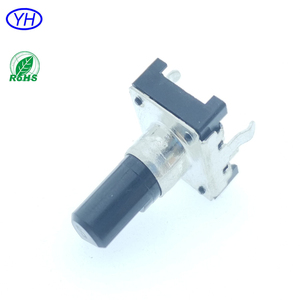Introduction to Incremental Signal
Incremental signals are vital components in various electronic systems, playing a pivotal role in the accurate transfer and measurement of motion or position. These signals are commonly used in applications such as robotics, CNC (Computer Numerical Control) machines, and industrial automation. Providing precise feedback regarding the position of motors and actuators, they enhance performance, reliability, and efficiency across diverse industries.
Types of Incremental Signal
Incremental signals can be categorized based on their format and output type. Understanding the various types can help in selecting the appropriate signal for specific applications:
- Quadrature Signals: These consist of two signal channels, often labeled A and B. Each channel is out of phase, allowing for directional movement detection.
- Single-Ended Signals: This type offers a simpler configuration with one output channel. It is less complex but may provide less resolution compared to quadrature signals.
- TTL (Transistor-Transistor Logic) Signals: These signals are characterized by their compatibility with digital electronics. They are robust and provide clear signal transitions.
- Open Collector Signals: Designed for interfacing with external devices, open collector signals require external pull-up resistors to create logical high outputs.
Applications of Incremental Signal
Incremental signals are integral in various applications due to their accuracy and reliability. Some notable scenarios include:
- Industrial Automation: Used for position feedback in servo motors and conveyor systems, ensuring precise control of machinery.
- Robotics: Essential for navigation and movement control by providing real-time feedback regarding the robot’s position.
- CNC Machines: Enables exact cutting and shaping processes through accurate positioning of tools.
- Elevator Control Systems: Facilitates precise movement and stopping of the elevator at designated floors.
Function, Feature, and Design of Incremental Signal
The design and functionality of incremental signals are crafted to ensure precision and efficiency. Key features include:
- High Resolution: Incremental signals provide high levels of accuracy, enabling precise measurements in dynamic environments.
- Bidirectional Capability: The quadrature format allows for detection of direction alongside position, enhancing the control mechanism.
- Noise Immunity: These signals often come with enhancements for better noise immunity, ensuring reliability in adverse conditions.
- Compact Size: The sensors and encoders designed to generate incremental signals are typically compact, allowing for easier integration into constrained spaces.
Advantages of Using Incremental Signals
Utilizing incremental signals in your systems presents several advantages:
- Improved Accuracy: The ability to detect small changes in position ensures high precision for critical applications.
- Real-time Feedback: Incremental signals provide continuous feedback, enabling instant adjustments to performance and control.
- Cost-Effective Solutions: Generally, incremental encoders and sensors are cost-effective while delivering substantial improvement in operation.
- Durability: These signals are often designed for rugged environments, making them suitable for industrial conditions with limited maintenance needs.
In summary, incremental signals are an indispensable technology in today's fast-paced industrial environment. Their diverse types, wide-ranging applications, and numerous advantages make them a preferred choice for enhancing motion control systems. Understanding and implementing incremental signals can lead to significant improvements in operational efficiency and precision.















































